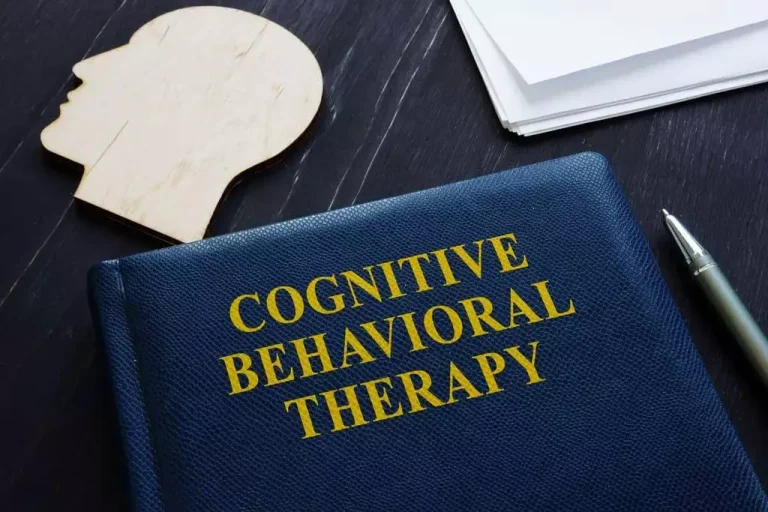
Increases in blood pressure, heart rate, body temperature, pupil size, plasma cortisol, prolactin, oxytocin, and epinephrine also were measured. The authors also described subjective effects on mood that were similar to those reported for MDMA that might be useful in psychotherapy. No severe acute adverse effects were observed and the effects subsided completely within 72 hours. That journey is just one of many highlighting the numerous positive effects of psychedelic https://ecosoberhouse.com/ substances such as psilocybin, LSD, MDMA, and others in a controlled therapeutic setting. So far, ketamine is the only psychedelic on the market approved to treat mental health conditions, but clinical trials on the others are unearthing treatment options once thought of as fringe medicine. However, regulatory hurdles, skepticism among many medical professionals themselves, and stigma continue to create significant obstacles to widespread adoption.
- The nonselective 5-HT2A/2C agonist R-DOI also was shown to have a dose-dependent reducing effect on IOP in the cynomolgus monkey (May et al., 2003).
- DOI-induced cell proliferation and phosphorylation of ERK1 and ERK2 was blocked by PD98059 [2-(2-amino-3-methoxyphenyl)-4H-1-benzopyran-4-one] and U0126 [1,4-diamino-2,3-dicyano-1,4-bis[2-aminophenylthio]butadiene], selective inhibitors of mitogen-activated protein kinase kinase (MEK).
- Psychedelics can induce perceptual alterations, such as enhanced colors, patterns, and a blending of sensory experiences called synesthesia.
- Clearly, highly 5-HT2A receptor–specific agonists would be most desirable, but thus far no such ligand has been identified.
Effects of Psychedelic Drugs
The most consistent finding for involvement of other receptors in the actions of psychedelics is the 5-HT1A receptor. That is particularly true for tryptamines and LSD, which generally have significant affinity and functional potency at this receptor. It is known that 5-HT1A receptors are colocalized with 5-HT2A receptors on cortical pyramidal cells (Martín-Ruiz et al., 2001), where the two receptor types have opposing functional effects (Araneda and Andrade, 1991). In addition to functioning as somatodendritic autoreceptors in the raphe, postsynaptic 5-HT1A receptors are also localized in a number of other important brain regions. Their highest density is found in limbic regions of the brain such as the hippocampus (Hamon et al., 1990), areas where emotion and affect would be modified by agonist and antagonist drug interactions. LSD and DOB induce a ketanserin-sensitive increase in shaking behavior in mice and rats, which includes both head twitches and wet dog shakes.
What is set and setting in the context of psychedelic experiences?
NIDA is a biomedical research organization and does not provide personalized medical advice, treatment, counseling, or legal consultation. Information provided by NIDA is not a substitute for professional medical care or legal consultation. Among people aged 12 or older in 2021, 2.6% (or about 7.4 million people) reported using hallucinogens in the past 12 months. Anyone considering the use of psychedelics—whether recreationally or therapeutically—should do thorough research, and be aware of the legal implications.
A challenging experience

They used lagged phase synchronization, a new measure that can capture nonlinear neuronal relationships to assess dynamic functional connectivity (Pascual-Marqui et al., 2011). This review will focus exclusively on the so-called classic serotonergic hallucinogens (psychedelics), which are substances that exert their effects primarily by an agonist (or partial agonist) action on brain serotonin 5-hydroxytryptamine (5-HT) 2A receptors, as discussed later. The discussion will not consider cannabinoids, dissociatives such as ketamine, salvinorin A (a specific opioid κ agonist), or entactogens such as 3,4-methylenedioxymethamphetamine (MDMA). In certain contexts, all of these and some related agents have been swept into the catchall category “hallucinogens.” Although they all can produce profound changes in consciousness, they have a different mechanism of action and will not be discussed unless there is a specific reason to do so. AUD is undertreated and marked by guilt, shame, and stigma, too often ending in despair and suicide.
- AMS did not induce an inward current in control (nontransfected cells) but elicited an inward current in neighboring neurons transfected with the 5-HT2A receptor.
- One generally cannot do prospective studies, to compare the brain function of the normal patient prior to the onset of his or her disease, and then examine it again after therapeutic improvement.
- The rabbit has not been widely used as an animal model to study the effects of psychedelics, but a number of experiments in this species have been carried out over the past decade, primarily in the laboratory of the late John A. Harvey.
- Although late evoked EPSCs were not evident, when 5-HT was washed out and synchronous evoked EPSCs and sEPSCs were returning to normal, late evoked EPSCs began to appear that resembled the asynchronous evoked EPSCs observed after Sr2+ substitution.
- Psychedelics or psychedelic drugs, are a subclass of a broader class of drugs commonly referred to as hallucinogenic drugs.
- Assessing the risks of psychedelic use is challenging, as there are many different substances, applications, environments and population groups in this rapidly developing field.
Abuse liability
Twenty-four hours after the last treatment, rats were decapitated and the frontal cortices were dissected and homogenized. For binding studies, aliquots containing 175–200 μg protein were incubated at 37°C with either [3H]spiroperidol (0.25 nM, 30 minutes) or [3H]glutamate (50 nM, 40 minutes). For measurement of 5-HT2A and mGlu2/3 coupling to G proteins, crude synaptic membrane pellets were resuspended and aliquots containing 15–20 μg protein were incubated with 3 μM GDP and 0.05 nM [35S]GTPγS. Studerus et al. (2011) pooled raw data from eight double-blind placebo-controlled experimental psilocybin studies conducted between 1999 and 2008.

Lieberman says he’s “bullish” about the therapeutic potential of psychedelics, but views the current enthusiasm as largely “speculative” because of weaknesses in the underlying data – including Lykos’ studies. The integration of psychotherapy with psychedelic treatments presents a unique challenge in standardizing treatment protocols. Critics, like those from the FDA panel, argue that the personalized nature of psychotherapy in PAT lacks the standardization typical of pharmaceutical treatments. However, this personalized approach may be necessary to fully harness the therapeutic potentials of psychedelics. A new article from Psychiatric Times discusses difficulties surrounding the integration of psychedelics into psychotherapeutic practices.

One significant, but rare, consequence of chronic use of psychedelic drugs is the development of a disorder known as hallucinogen-induced persistent perception disorder. This disorder occurs when individuals who no longer use these drugs experience flashbacks weeks, months, or even years after their last use. Flashbacks consist of experiences that typically occurred while under the influence of the drug, but they occur without actually taking the drug. It appears that a little over 4 percent of individuals who chronically used hallucinogens or psychedelic drugs develop this disorder. LSD (lysergic acid diethylamide) is a drug that even when taken in very small amounts produces very powerful alterations of mood and vivid visual hallucinations. Most often, individuals who take LSD experience euphoria; however, three can be quite a range of symptoms that include extreme wellbeing to feelings of severe anxiety and even of total despair and hopelessness.

Spravato Side Effects to Know About
Early autoradiographic studies by Jueptner and Weiller (1995) indicated that perisynaptic activity, representing primarily input and local processing in the cortex, rather than cell bodies, accounts for the major part of cortical metabolic energy demands. The spatial resolution are psychedelics addictive of ayahuasca-induced changes in brain electrical activity was investigated in 18 volunteers using low-resolution electromagnetic tomography (Riba et al., 2004). Analyses of EEG sources showed changes in current density in the ACC, but even more so in the PCC.



